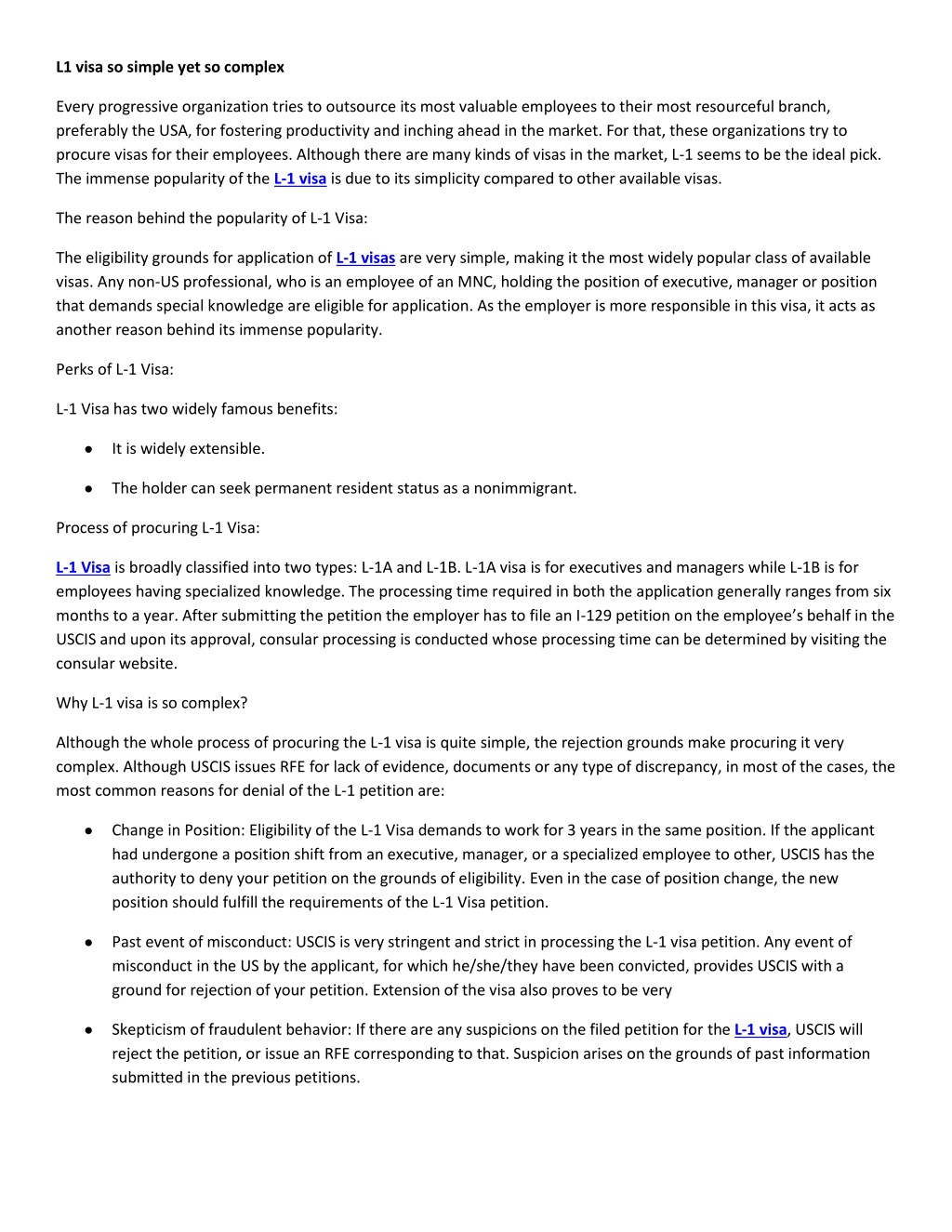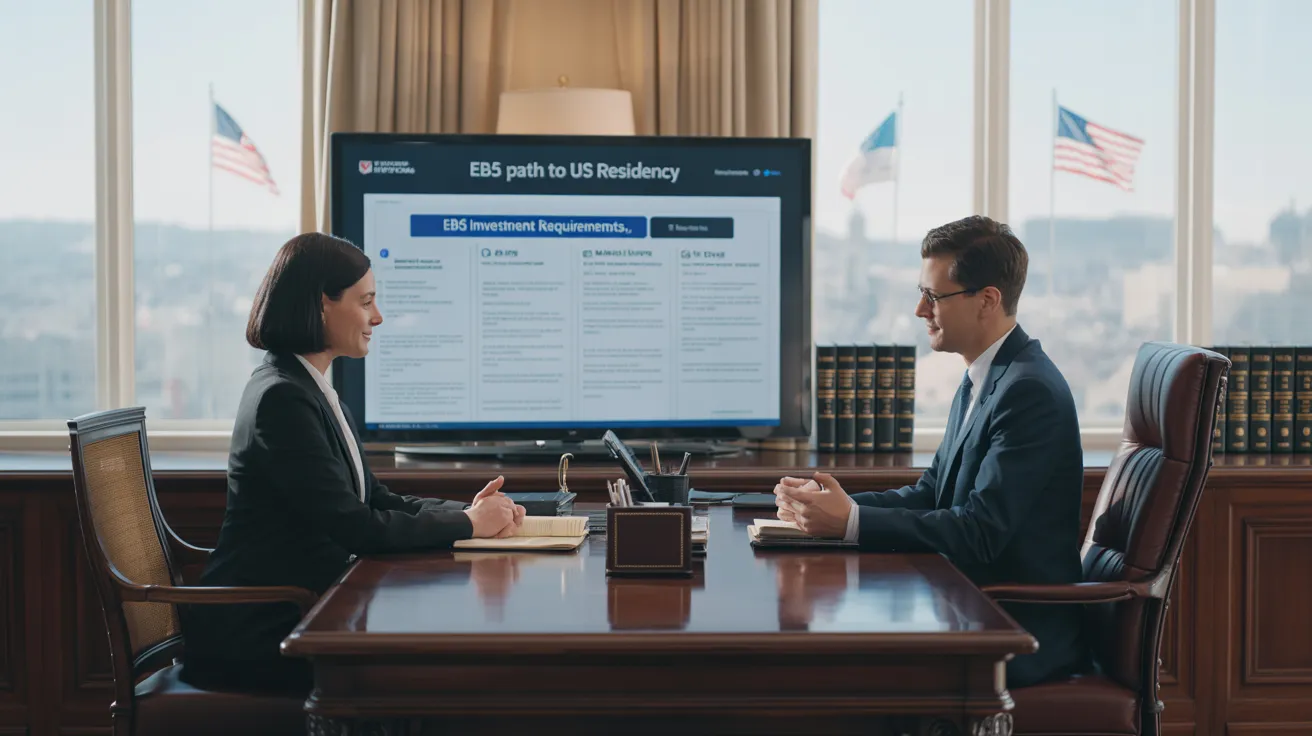The 4-Minute Rule for L1 Visa
Table of ContentsFascination About L1 VisaThe Facts About L1 Visa UncoveredAbout L1 VisaExamine This Report about L1 VisaL1 Visa Can Be Fun For Everyone7 Easy Facts About L1 Visa Described
Offered from ProQuest Dissertations & Theses International; Social Science Costs Collection. DHS Office of the Examiner General. Obtained 2023-03-26.
U.S. Department of State. Retrieved 2023-02-08. Tamen, Joan Fleischer (August 10, 2013).
Not known Details About L1 Visa
In order to be eligible for the L-1 visa, the international business abroad where the Beneficiary was employed and the U.S. company have to have a certifying connection at the time of the transfer. The different types of certifying partnerships are: 1.
Example 1: Firm A is integrated in France and uses the Beneficiary. Company B is incorporated in the U.S. and intends to petition the Beneficiary. Business A possesses 100% of the shares of Business B.Company A is the Parent and Business B is a subsidiary. Consequently there is a qualifying connection in between the 2 firms and Firm B must be able to fund the Recipient.
Instance 2: Company A is included in the U - L1 Visa.S. and intends to request the Beneficiary. Firm B is incorporated in Indonesia and utilizes the Beneficiary. Company An owns 40% of Business B. The staying 60% is had and controlled by Business C, which has no connection to Firm A.Since Company A and B do not have a parent-subsidiary relationship, Business A can not fund the Recipient for L-1.
Example 3: Business A is included in the united state and wishes to seek the Recipient. Business B is integrated in Indonesia and utilizes the Recipient. Firm An owns 40% of Firm B. The staying 60% is possessed by Company C, which has no relation to Company A. However, Business A, by formal agreement, controls and full handles Company B.Since Firm A has less than 50% of Company B but takes care of and regulates the firm, there is a certifying parent-subsidiary connection and Company A can sponsor the Recipient for L-1.
Unknown Facts About L1 Visa
Associate: An associate is 1 of 2 subsidiaries thar are both possessed and regulated by the same moms and dad or person, or owned and controlled by the very same team of people, in primarily the same proportions. a. Example 1: Company A is integrated in Ghana and uses the Recipient. Company B is integrated in contact us the united state
Firm C, also integrated in Ghana, owns 100% of Firm A and 100% of Company B.Therefore, Firm A and Business B are "affiliates" or sister companies and a qualifying relationship exists in between the two business. Firm B need to have the ability to fund the Recipient. b. Example 2: Company A is integrated in the united state
Business A is 60% possessed by Mrs. Smith, 20% possessed by Mr. Doe, and 20% owned by Ms. Brown. Business B is incorporated in Colombia and currently employs the Recipient. Business B is 65% had by Mrs. Smith, 15% possessed by Mr. Doe, and 20% owned by Ms. Brown. Company A and Company B are associates and L1 Visa process have a certifying partnership in two different ways: Mrs.
The L-1 visa is an employment-based visa group established by Congress in 1970, enabling multinational business to move their managers, execs, or essential personnel to their united state operations. It is frequently described as the intracompany transferee visa. There are two primary sorts of L-1 visas: L-1A and L-1B. These kinds appropriate for staff members employed in different placements within a business.

Additionally, the beneficiary should have worked in a supervisory, executive, or specialized staff member position for one year within the three years coming before the L-1A application in the foreign business. For brand-new workplace applications, foreign work needs to have been in a managerial or executive capacity if the beneficiary is coming to the United States to function as a manager or executive.
All About L1 Visa

If granted for an U.S. firm functional for greater than one year, the initial L-1B visa is for as much as 3 years and can be expanded for an added 2 years (L1 Visa). On the other hand, if the united state company is newly developed or has been functional for much less than one year, the initial L-1B visa is released for one year, with expansions offered in two-year increments
The L-1 visa is an employment-based visa group developed by Congress in 1970, permitting international firms to move their managers, execs, or essential personnel to their United state operations. It is typically referred to as the intracompany transferee visa.
The Of L1 Visa
In addition, the recipient needs to have worked in a supervisory, executive, or specialized staff member setting for one year within the 3 years coming before the L-1A application in the foreign company. For brand-new workplace applications, international work needs to have remained in a managerial or executive capacity if the recipient is coming to the United States to work as a manager or executive.
for as much as 7 years to manage the procedures of the U.S. associate as an executive or manager. If provided for a united state company that has actually been operational for even more than one year, the L-1A visa is L1 Visa attorney originally provided for up to three years and can be expanded in two-year increments.
If approved for an U.S. firm functional for greater than one year, the initial L-1B visa is for approximately three years and can be prolonged for an added two years. Conversely, if the united state business is freshly developed or has actually been operational for less than one year, the preliminary L-1B visa is released for one year, with extensions offered in two-year increments.